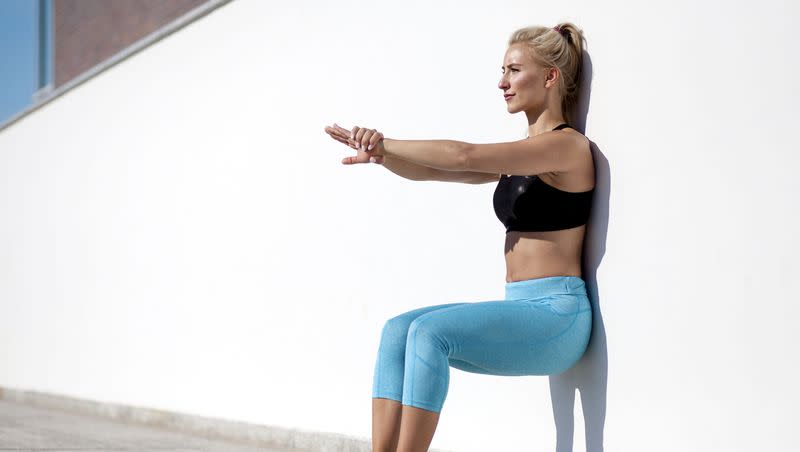How this simple, low-intensity exercise can reduce blood pressure

Running, swimming, cycling and other aerobic exercises that move the body's largest muscles have long been considered the best activities to reduce blood pressure.
But new evidence shows that simple isometric exercises — contracting your muscles without any movement — like wall sits or planks can lower blood pressure even more effectively than high-intensity workouts.
A recent study published in British Journal of Sports Medicine found that about eight minutes of isometric exercise, three times a week, can lead to a meaningful reduction in blood pressure, according to The Washington Post.
Per the Post, “The research is good news for people who struggle to meet physical activity guidelines that recommend at least 150 minutes of weekly moderate-intensity exercise, like brisk walking or bicycling.”
Related
Holding a wall sit for two minutes and resting for two minutes for four repetitions would take only 14 minutes, including breaks. Wall sits could also be done for shorter durations with shorter rest in between.
On average, a regular isometric routine of wall sits lowered systolic blood pressure by 10 mmHg and diastolic pressure by 5 mmHg, according to the study.
The study’s authors say the findings support development of new exercise guidelines that go beyond recommending aerobic exercise for the prevention and treatment of hypertension.
“Our main message is that actually engaging in exercise is fantastic and any exercise might reduce your blood pressure,” Jamie O’Driscoll, the senior author of the study, told the Post. “But if you’re an individual who is currently exercising to the guidelines and you’re still having a bit of difficulty reducing that blood pressure and you want to avoid going on medication, perhaps isometrics is an additional mode to complement the exercise you’re already doing.”
Related
How does isometric exercise lower blood pressure?
Isometric exercises effectively lower blood pressure because contracting a muscle and holding the position temporarily reduces blood flow to that muscle, O’Driscoll said, per the Post. When you release that contraction, blood flow through the muscle tissue increases. This produces important signals that prompt blood vessels to relax more and creates less resistance to blood flow, which ultimately reduces blood pressure, O’Driscoll said.
The study examined findings from 270 clinical trials involving a total of more than 15,000 people. All the trials lasted at least two weeks and reported the effects of exercise on blood pressure. As expected, most types of exercise helped lower blood pressure. But the most effective workout, especially in people who had high blood pressure, was isometric exercise training, according to Harvard Health Publishing.
“From a clinician standpoint, these are very promising findings,” Laura Richardson, a registered clinical exercise physiologist at the University of Michigan who was not involved in the study, told the Post. “Being able to use isometric exercise as a therapeutic tool for those with hypertension is wonderful. I really think it’s a great way to get more individuals involved in being active.”
How do you do a wall sit?
A wall sit, also known as a wall squat, can be performed on any flat wall. Start with your back against the wall with your feet shoulder width apart and about two feet from the wall. Engage your abdominal muscles and slowly slide your back down the wall until your thighs are parallel to the ground. Keep your back flat against the wall.
If you can’t get to a 90-degree angle, Richardson recommends sliding down based on your knee flexibility and holding steady until you feel lower-body muscle fatigue. The lower you squat, the more intense the workout.
Isometric exercises like wall sits engage a lot of muscles, help build strength and are helpful for improving balance and range of motion, Richardson told the Post.
“Primarily, you’re going to be using a lot of your leg muscles: your quadriceps, your glutes, your calves,” Richardson said. “If your back is flat against the wall, it’s going to help engage the abdominal muscles.”
Related

